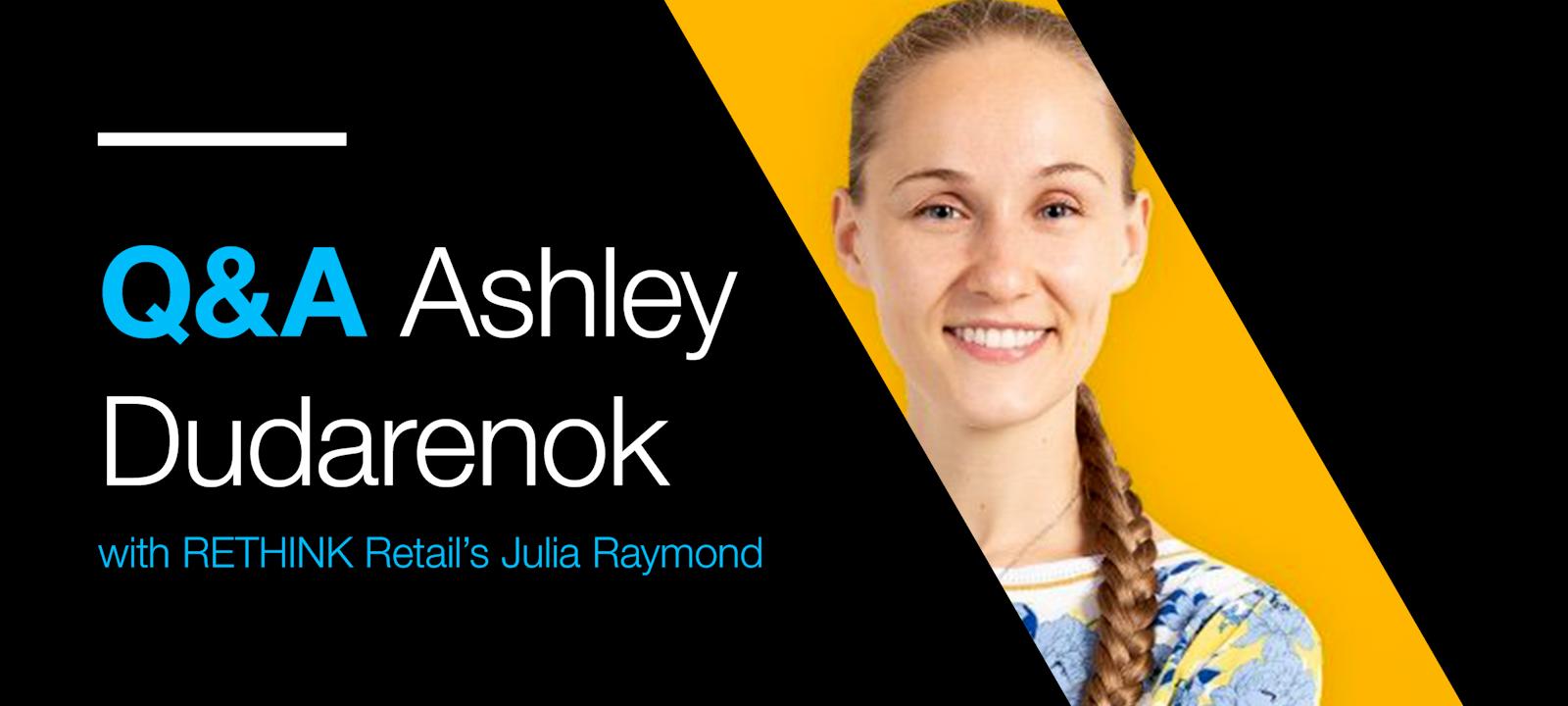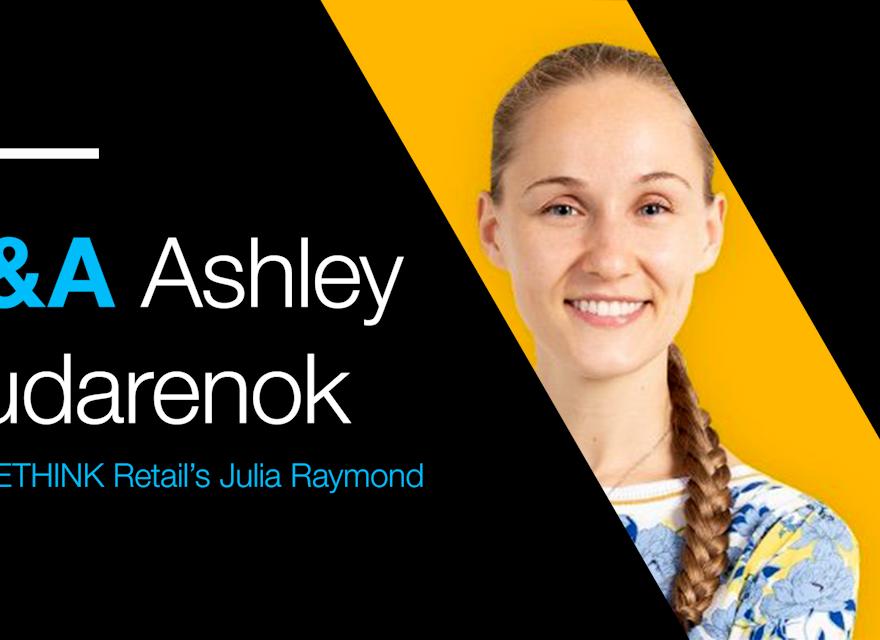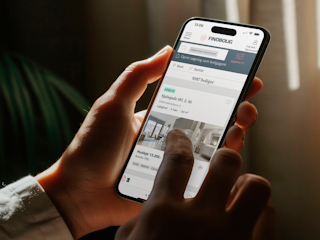Julia Raymond:
As life in China slowly returns to normal, what are some of the takeaways for you? How was your company affected?
Ashley Dudarenok:
So, in Hong Kong, everything started a lot earlier. In Mainland China, things started probably a week or two before even Hong Kong. What we’ve seen here in the region is that it is definitely tough for businesses—it is definitely not SARS.
For those people that remember 17, 18 years ago there was also another virus originating here in this part of Asia, and that was a very quick kind of a shock to the system, and then everything very quickly, within four or five months went back to normal, right? And prices in Hong Kong dropped to its lowest, and the whole region, it’s not just Hong Kong and Mainland China, but the whole region was shaken. The mortality rate was very high, but the moment essentially it was contained, everything was back to normal.
Ashley Dudarenok:
Right now, we see that this particular virus is definitely behaving differently, and businesses here are affected long term. I think for China right now, a lot of manufacturing facilities, a lot of businesses are getting back to operations, but a lot of people started working from home, which was very unusual for Mainland China. The mainland is very digital and people are spending a lot more time watching live streaming videos. Just basically last week, for example, 13 mayors of cities in the Hubei province were actually live streaming to sell the products from their province, from their city, onto the larger Mainland China audience. And let’s say a mayor of Wuhan was live streaming about snacks, about cars, and about property. It is amazing, right?

Ashley Dudarenok:
So you see definitely a lot of shifts, and it’s going to be very interesting. What I definitely see is that Mainland Chinese is definitely recovering first, because it just originated in China first, and also very severe measures were taken to contain the virus after the initial first weeks where the time was wasted outside. So it is definitely going to be a very interesting adjustment period, and we’re all looking forward to that.
Julia Raymond:
We certainly are. Streaming is a trend that perhaps in your agency, you’ve seen take off in China. Is that something you think brands and retailers will specifically continue doing, even after the pandemic has ended?
Ashley Dudarenok:
Absolutely. In China, live streaming is not something new. So, in China, this is a reality of life. In the West, we live stream for fun primarily, but there’s very little e-commerce live streaming. In China, because the whole blogger world is operating very differently, they actually started live streaming for fun. So basically, when you watch somebody, you give them gifts, and that’s how the blogger makes money.
Ashley Dudarenok:
But in China, they went to step forward and they said, “Okay, live streaming as e-commerce channel is a phenomenal opportunity, because I can show you my farm, and I can sell you oranges.”
So, it’s live streaming turned into a bizarre copy of early ’90s TV advertising and people love it. It’s entertaining and people feel that it’s also a place to talk to others. And the social isolation has not completely shifted or changed the way people purchase right now, but it has accelerated this move towards live streaming. So, it’s definitely there to stay. In China though, a lot of people do live streaming, but everybody but the brands is making money.
Ashley Dudarenok:
The platform is making money, the agencies are making money, the bloggers are making money, but the brands obviously, are on the suffering side, because it’s not for them. They are going to sell a lot, but the cost to operate a livestream is very expensive. So, you need to make sure that after selling, you are able to get a repeat purchase, or you’re able to somehow retain your customers. So that’s what I think in the West when we talk about this live streaming in China, people do not understand. E-commerce live streaming comes at a price, it comes at a cost, but it’s a great opportunity to acquire customers, but essentially, it’s not going to make or have a positive ROI, initially.
Julia Raymond:
It sounds like it’s a bit of a long play then.
Ashley Dudarenok:
Yeah, absolutely. Like everything else, China is a very complex market. Consumers are very spoiled by having so many product and services that target them. They’ve got a lot of money, they are very excited, but they also know the good stuff. And you need to be reasonable in terms of price, you need to be good quality, and you need to be adapted to that market in order to cater to them.
So, when you operate in such a fast-paced environment, you really need to, essentially, change very quickly. It is a very interesting market because the upside is very high. There are so many people, there are so many opportunities, and there are so many niche groups you can enter with a tiny little niche product. It will be your biggest market, but in order to get there, you need to cut through the whole noise, and this is expensive and it takes time.
Julia Raymond:
Are there any other trends you’ve seen retailers pick up that were specifically spurred by the pandemic? Here, I know that we’re doing a lot of click-and-collect, and curbside pickup. Is curbside pickup even a trend in China? Is that possible with the infrastructure?
Ashley Dudarenok:
I think it is. But what’s happening in China, is that they have those contactless delivery services, which were stress-tested during the epidemic when the entire country was on lockdown. There are people that can leave your parcel at location A, and then you go pick it up at whatever time you want. There were also other interesting ways to do this. For example, there is a service where you park a car next to your apartment building, and then once your delivery comes, you just open the car and the person puts your parcel inside your car and locks it.
Ashley Dudarenok:
And then, it wasn’t all across China, but in some cities, for instance, platforms like JD were able to do last mile delivery through drones and contactless delivery. That was very interesting to see. And while I think in the rest of the world, people still feel that this is so far away, the whole drone thing, and the whole contactless delivery, and the whole robots, and the whole vending machines with all the necessities. But in China, once the country stood still, there were vending machines with masks, they were vending machines with rice.
Julia Raymond:
Wow.
Ashley Dudarenok:
You could buy rice from a vending machine, and you would choose what kind of rice you want. So again, the speed is really something that sets China apart. And of course, the fact that people welcome innovation—people welcome this digital arm of the world. And in the rest of the world, we very often feel like “No, I’m not quite sure. I’m not ready to change so fast.”

Julia Raymond:
And I’m just really surprised that you said drones aren’t a figment of the imagination, because of a lot of people I speak to on my podcast, they’re just like, “Oh, Amazon, they say that they’ll have drone delivery, and that’s just a PR play.” And you’re saying there were successful drone deliveries to consumers’ homes, it sounds like?
Ashley Dudarenok:
Yeah, so they have a dropping area. So again, for instance, like in Beijing, they have the park where they drop and it’s not far from where you live. So, then the little robot car, a kind of driverless, tiny little car, picks it up from the drone area and then brings it to your home or to your office building. And you will see that, let’s say in some small villages where it’s really difficult to get to those villages, they have much larger drones. And they set up this landing site, so then everything the whole village purchases in a week, is delivered to them through this large drone, and it just basically lands in the middle of the village for people to come to pick up. So, do those drones fly into your living room and drop the parcel? No. Obviously, there are regulations against them, but there are effective routes and there are active deliveries happening in China right now.
And it’s not only drones, but there are also these driverless little cars and vehicles that do between one to three-kilometer deliveries within apartment blocks, or office buildings, or hotels. You also have the tiny little robots that will pick something up from downstairs and drive them directly to your desk.
Julia Raymond:
Does the robot, he takes the elevator then? He just goes up to your floor?
Ashley Dudarenok:
Yeah, he just takes the lift.
Julia Raymond:
Wow!
Ashley Dudarenok:
And the robot belongs to their partnered buildings, all the office buildings, so it knows and it communicates with all the systems, and it’s really a cute little chap.
Julia Raymond:
And you’re saying this is something that existed before the pandemic, but it was just was used much more during the pandemic?
Ashley Dudarenok:
Yes. There’s a huge boost in that right now. Not every office building has them, but the major ones, the big ones in major cities, absolutely. And in terms of hotels, that’s also an absolute must. You need to have contactless check-in and contactless service, so this is becoming an everyday life.
Julia Raymond:
That’s really cool. And just because you’re an expert, I wanted to pick your brain a little bit. How do you think the Chinese consumer differs from the European, consumer, the North American consumer, or the Australian consumer? What are the major differences? How is China able to adapt so much faster?
Ashley Dudarenok:
Well, I think Australians are extremely different from Americans, and Americans are extremely different from Europeans. Within Europe, you’ve got so many different markets. German consumers— my husband is German—and the consumer from Portugal are totally different.
First of all, each market has unique problems. Secondly, each market has a unique set of values. What do they value most? And thirdly, each market has unique realities. How that market, how that little ecosystem, works. So, they are all incredibly different. But what is true, is that, in mainland China, they literally live in a parallel universe. What is understandable, what can be connected to the multiple touchpoints in the UK, and Australia, and Germany, it is completely out of question, let’s say in Mainland China. So that’s where I think the disconnect is a bit more obvious.
Ashley Dudarenok:
In terms of if we go one by one in terms of consumer preferences, people in China right now are essentially polarizing after coronavirus. Some part of them is going into the upgrade of consumption, and another part of them is going to downgrade their consumption. It’s not so many people in the middle, and I believe there might be something like that happening in the rest of the world, but a lot more people will go down, downgrading their consumption.

Ashley Dudarenok:
Secondly, in terms of the values, what people value, I believe it’s going to be global. Right now, the Chinese have started to value health, fitness, and safety a lot more. It was always high on the list, but there were other things that conflicted this. To be successful, you can work from 9:00 AM to 9:00 PM, six days a week, and success, being a better, higher, stronger, etc. is very important. It is a part of a mentality, a part of the culture, right? And this is what makes this region so exciting, and so fast, and so prosperous. But right now, we have health and safety definitely on top of the list, And this shift in values for each of those tiny consumer groups will have some, again, tweaks in consumption. And I believe in the rest of the world, we might also see those changes.
Ashley Dudarenok:
And when it comes to the realities of the market, that’s where it’s completely different. In China, as I said, change is encouraged, change is expected. Technology is embraced both because of the realities of their daily life, and the centrally governed economy, and the tech companies that are controlling so much data. And they are not selling you stuff, they are not spamming you, they are really using this data to make your life easier, to provide you services. Like with WeChat, you can file for divorce.
Julia Raymond:
Wow!
Ashley Dudarenok:
Literally, you can file for a divorce. You can purchase airline tickets with your face when you enter the airport. They will identify who you are and show you where you need to go. You don’t need to check a hundred sheets and papers to figure out where to go, and this is what’s absolutely different and absolutely beautiful. And of course, Chinese consumers have very high expectations of the brands that operate within that market. You need to be great quality, as I said, you need to be speaking to that to them as customers, solving their unique problems, having some of that Western appeal and promise for quality, safety, and health. Whichever way you want to put it, it also needs to be healthy for the environment and at the same time, it needs to be highly adapted to the Chinese market.
Julia Raymond:
Those are really great points. In terms of your company, in your experience, are you focusing on anything now that you weren’t previously, or are there things that you would’ve done differently knowing that the pandemic was coming? What are some hindsight learnings?
Ashley Dudarenok:
I think for us personally, business-wise, we are in a really, really happy place right now. While a lot of businesses are going down, or they’re firing, we are actually in the business where we get a lot of inquiries, and we get a lot of projects because everybody is revising their China strategy. They want to have their China plan ready, because they understand that the rest of the world is going to be recovering much slower, and probably their potential for growth globally for 2020, and maybe even 2021, is going to be put on this one specific market. So those that were in the market need to revise the strategy, those that were not in the market, they want to go there to have at least one kind of market of growth.
Ashley Dudarenok:
In terms of our company operations, we definitely we were like all human beings: very resistance to change. We used some technology, absolutely. We used Slack forever, and we are on DingTalk, and we’re on WeChat Talk, and WeChat Work, etc. But we were not using project management software, because it’s very easy to be in the same office, so that’s definitely been a positive change. Another thing that I think was an important realization is how important it is to just talk to people and support them with reassurance. You can be either a boss of the company, or you can be a leader of the department, or you as an employee in the company, in any situation, you can show up as a leader.
Ashley Dudarenok:
You need to reassure the people, show them the bright future, keep that energy up, and that was very interesting to watch, right? When we are physically in the same place, people are sort of infected with that energy, but when you’re not in the same place, you can just spend time to speak with people one-on-one, to speak with people in small groups, and that was also very interesting learning. So, I believe that we are coming out of this crisis stronger, better, and a more awesome team. But there were definitely a couple of things that we did not really pay so much attention before the whole situation happened. We have been doing home office for the past three weeks, and just this week, we are back in the office like, “Yes! Finally, we can see each other!”
Julia Raymond:
Back in person! It’s definitely a big change, and those are some good points you made for any leaders who might watch this, is that one-on-one interaction when you have to work remotely is so important.
Julia Raymond:
And another thing, the Chinese consumer is a huge part of the luxury retail market. Do you think that that’s going to dip for the long term over the next five years, or do you think it’ll come back?

Ashley Dudarenok:
The big picture will not change. Right now, we are living in the age of rising middle class of Asia. So that’s the picture and the story of the next 15 to 20 years, maybe even 30. So, the middle class will continue raising, and they will want to have luxury as a part of their lifestyle. That’s not going to change. Right now in China, we see so many gorgeous brands coming out in fashion, in cosmetics, in just about everything, that are local, beautiful, high-quality brands.
Ashley Dudarenok:
Is this transition from, let’s say Western brands to Chinese brands, luxury-wise, is it going to happen fast? No, it’s not going to happen fast. It’s probably another five to 10 years away, but all these shifts are very predictable, and we see them, and it’s definitely moving there. So, will our luxury industry suffer? Most likely, yes, because people are not traveling that much, and a lot of that consumption is happening overseas. Will these companies be going down for 10 years? Absolutely not. They will recover, and they will have to keep reinventing themselves to stay in touch with that market.
Ashley Dudarenok:
And I think some are doing it much better than others, not only some brands, but also some industries within luxury are doing it much better than others. Essentially, those that are able to leverage this crisis to reconnect with what’s really important to your consumer and leverage it to understand how they can really solve their problem. Those are going to be huge winners, and there is space for both Chinese luxury brands down the road, and of course, Western luxury brands as well.
Julia Raymond:
Final question. What advice would you give retailers who are looking to redo their strategy in China?
Ashley Dudarenok:
First of all, you need to really do a consumer study, and that strategy, whatever you’re doing, needs to have a consumer study element. China is so vast and there are so many consumer groups, the idea that you might have about the consumer that you want to reach in China might be totally disconnected with reality. And very often, companies think they know who is their consumer is because they know who is buying their product right now. But once you start digging deeper, you understand that your distributor actually did not build your brand. They actually did not misrepresented, but simply put, they did not do anything to formulate your message in the market. So those people that are buying your product might not be your ideal audience.
Ashley Dudarenok:
And of course, you need to identify what your angle is right now. What is your unique selling point or preposition? But in the message, it needs to be a story, and then as a part of that same strategy, you need to have a plan forward. So in 2020, 2021, what am I going to be doing? What are the stages? What are some of the milestones that I want to reach? And essentially, you need to benchmark yourself against competitors. China will never be cheaper, China will never be easier to access, and I’m telling you that with a very clear statement here that China, right now, is the most expensive advertising marketing world, and it is the most complicated. So, the longer you wait, the more expensive it will get.












